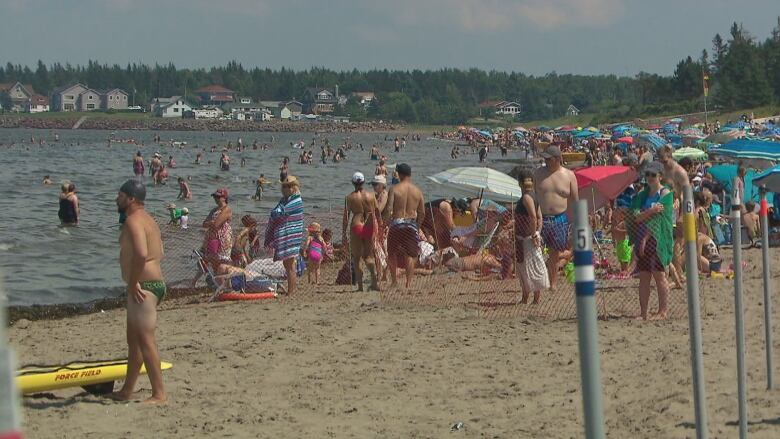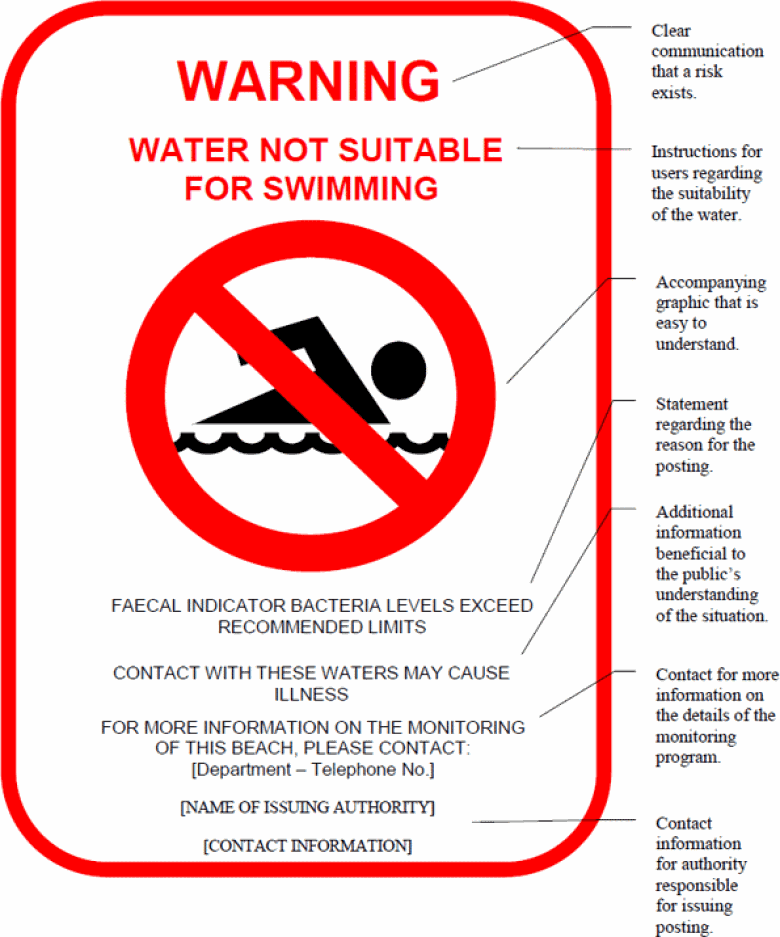Water monitoring at Parlee Beach failed to meet Canadian guidelines
Province's most popular beach uses N.B.-made rating system, with looser guidelines for beach closure

Water testing at New Brunswick's most popular beach destination, Parlee Beach, has failed to respect Canadian guidelines, allowing it to remain open to swimming on several days when it would otherwise have been closed this past summer.
Under the widely followed guidelines which are used in Nova Scotia, Ontario and British Columbia ParleeBeach would have been closed to swimming between Aug. 3 and Aug. 6, as well as between Aug. 16 and Aug. 21, because of the risk of illness.
- Parlee Beach plagued by poor water quality this summer
- VictorBoudreaudismisses call forParleeBeach sign improvements
That would be a total of 10 days during peak season at one of New Brunswick's iconic tourism destinations.
Canadian guidelines dictate a beach should be closed to swimmers if fecal bacteria levels reach a value above 70/100 ml of water on any day, until the next test shows values within acceptable limits.
Levels exceeded twice
Parlee exceeded those levels on Aug. 3 and was not tested again until Aug. 7. The level was above 70 again on Aug. 16 and the beach wasn't tested until Aug. 21.

On those days where the bacteria count was high in August, the beach remained open to swimmingand was instead given a "poor" rating, which according to the province's chief medical officer of health, meant children under six should have stayed out of the water.
The elderly, people with open skin lesions and people with weak immune systems also should not have been in the water.
No one should have put their head under the water either, because of the risk of eye, nose, mouth and ear infections.
Four signs posted atParleeBeach during those days had a blue droplet next to the "poor" indicator.
There was a small pamphlet with a description of the rating taped to the sign. But at other entrances to the park, there was no indication of a problem.
During summer 2016, the water at Parlee Beach was rated poor four days in June, six days in July and 18 days in August.
Unique rating system

"Concerns had been raised about pollution, and about the environment, and the quality of the water at Parlee Beach," said Joan MacAlpine, who was minister of tourism at the time.
At the same time the index was developed, the responsibility of water monitoring was transferred from the department of health to tourism for Parlee Beach and Murray Beach, while the rest of the province's beaches remained under the authority of health.
"It was our park, it was our beach. We felt it would be wise to take it on," said MacAlpine.
System's origin a mystery
Two medical doctors with cottages near the beach recently raised the alarm about Parlee Beach's water-rating system and its failure to comply with Canadian guidelines.
In a 106-page letter to Premier Brian Gallant, Dr. Scott Mawdsley refers to the unique water monitoring as "odd" and "sordid," adding he has not been able to find any similar programs in North America or Europe.
But how the system was developed, why it differs from Canadian guidelines, is not clear.

"But I'm sure the Office of the Chief Medical Officer of Health would be able to provide more details on that."
In an interview, Dr. Jennifer Russell, acting chief medical officer of health, said she did not know details of how the system was developed.
"I don't have all the background knowledge on that. There was a working group that was formed to address issues at that time, and that's where it was generated from," said Russell.
No province-wide strategy
The acting chief medical officer of health confirmed that Parlee, Murray and Aboiteau beaches are the only ones in this province to use this rating system.

But Russell said the water monitoring strategy may be reviewed moving forward.
"We're all very concerned about the public's health. Obviously we would like people to be able to protect themselves with whatever means possible," said Russell.
"We're taking this very seriously. And that's why we're putting the working group together."












_(720p).jpg)


 OFFICIAL HD MUSIC VIDEO.jpg)
.jpg)



























































































